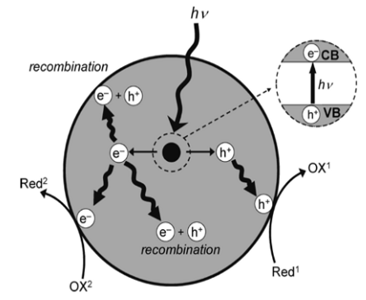Titania nanoparticles in Metal-Organic Frameworks: novel catalyst design by a combined experimental and theoretical approach
Titania nanoparticles in Metal-Organic Frameworks: novel catalyst design by a combined experimental and theoretical approach
Promotor(en): V. Van Speybroeck, P. Van der Voort /MM_14_NANO_15 / Nanoporous materialsThe increasing importance of titania nanoparticles in modern live has boosted the research towards design of novel materials. One of the applications of these materials is in photocatalysis (Fig. 1), where it absorbs light and converts it to energy, activating molecules and catalysing crucial organic reactions in a more environmentally friendly way. Use of nanoparticles present several advantages, with in the first place their high active surface area and the tuneability of their properties in function of their size. However, synthesis difficulties and aggregation problems result in the fact that real applications are still limited. Moreover, theoretical studies of the fundamental mechanisms happening at the surface of these nanoparticels are rare. Most groups only study bulk materials and surfaces, however, the unique changes when decreasing the size of the nanoparticles and their consequences on catalysis are still largely unknown.

Fig. 1: Processes in the titania nanoparticle: Formation of the exciton and activation of surface adsorbed molecules.Within this project, we will combine theoretical and experimental research in order to study the catalytic properties of small titania nanoparticles (1- 4 nm) and gain insight in the fundamental mechanisms. We will study a range of nanoparticle sizes, starting from the smallest size reachable with state of the art colloidal synthesis (3-4nm) towards the largely unexplored quantumsize regime (
- Study programmeMaster of Science in Chemistry [CMCHEM]

